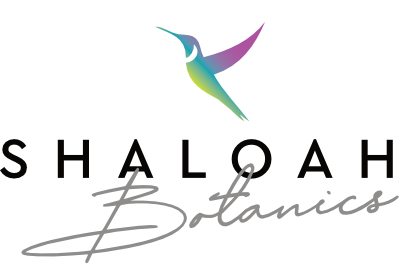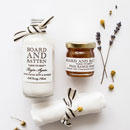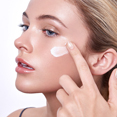Your Guide to Legally Buying Mushroom Spores for Research
Embark on your mycology journey with premium, lab-grade mushroom spores. Discover a trusted source for a diverse selection, perfect for your research and microscopy studies. Find exactly what you need to start exploring today. Understanding the Different Types of Spores Understanding the diverse world of spores is fundamental to mycology and microbiology. These reproductive units […]
Embark on your mycology journey with premium, lab-grade mushroom spores. Discover a trusted source for a diverse selection, perfect for your research and microscopy studies. Find exactly what you need to start exploring today.
Understanding the Different Types of Spores
Understanding the diverse world of spores is fundamental to mycology and microbiology. These reproductive units are not a monolith; they vary dramatically in function, origin, and dispersal mechanism. Ascospores, for instance, are the primary fungal spores produced sexually within a sac-like ascus, characteristic of morels and truffles. In contrast, basidiospores form on the outside of a basidium, typifying the reproduction of mushrooms and puffballs. Other critical categories include conidia, which are asexual spores, and the resilient zygospores formed by zygomycetes. Recognizing these distinctions is crucial for accurate microbial identification and understanding the life cycles that impact agriculture, medicine, and ecosystem dynamics.
Psilocybin vs. Gourmet vs. Medicinal Varieties
Understanding the different types of spores is key to appreciating the incredible diversity of fungi and plants. These microscopic reproductive units are not all the same; they vary greatly in function, origin, and dispersal method. For instance, fungi produce spores through both sexual and asexual means, allowing them to colonize new areas rapidly. Plants like ferns and mosses also rely on spores for propagation, a process completely separate from seed production. Fungal reproduction mechanisms are fascinatingly complex. It’s a tiny world with massive ecological impact. By learning about these variations, from durable resting spores to lightweight airborne ones, we gain insight into how these organisms survive and thrive in nearly every environment on Earth.
Identifying Legal Species for Your Region
Understanding the different types of spores is fundamental to mycology and plant sciences. Spores are primarily categorized by their function and origin. Key distinctions include sexual spores, such as ascospores and basidiospores, which facilitate genetic diversity, and asexual spores like conidia and sporangiospores, which enable rapid colonization. Other critical types are dormant survival structures like zygospores and oospores, and dispersal units from ferns and mosses. This **fungal spore classification** is essential for identifying species, managing crop diseases, and advancing biotechnological applications. Recognizing these differences provides critical insight into reproductive strategies and ecological roles.
Popular Strains for Beginners and Experts
Understanding the different types of spores is fundamental to mycology and plant sciences. Spores are primarily categorized by their function and origin. Key classifications include sexual spores, such as ascospores and basidiospores, which enable genetic diversity, and asexual spores like conidia and sporangiospores, which facilitate rapid colonization. Other critical types are dormant zygospores and environmentally resilient endospores produced by some bacteria. This knowledge is crucial for applications in agriculture, medicine, and biotechnology. Mastering **fungal spore identification** allows professionals to manage crop diseases, develop antibiotics, and advance biological research effectively.
Finding a Reputable Spore Supplier
Embarking on the fascinating hobby of mycology begins with a crucial first step: finding a reputable spore supplier. A trustworthy vendor is your gateway to success, offering viable, clean, and correctly identified specimens for microscopic research. Prioritize suppliers who demonstrate a commitment to quality control and customer education. Look for clear lab results, sterile packaging, and a wealth of positive, verified reviews. This due diligence ensures you receive premium genetics for your studies, making your initial spore supplier selection the most important decision you’ll make. A reliable source provides the foundation for a safe, educational, and rewarding exploration into the fungal kingdom.
Q: What is the most important factor when choosing a spore supplier?
A: A proven reputation for reliability, sterile techniques, and excellent customer service is paramount.
Q: Are customer reviews helpful?
A: Absolutely. Verified reviews offer genuine insight into product quality, shipping speed, and the overall customer experience.
Key Indicators of a Trustworthy Vendor
Finding a reputable spore supplier is crucial for mycologists seeking quality specimens for microscopic research. A trustworthy vendor prioritizes purity, viability, and legal compliance, ensuring all products are intended for lawful study. Prospective buyers should conduct thorough research by scrutinizing third-party reviews and community feedback on dedicated mycology forums. This due diligence helps verify a supplier’s legitimacy and customer service history. For reliable microscopy supplies, selecting a supplier with a transparent and established reputation is the most critical step.
Evaluating Customer Reviews and Testimonials
Finding a reputable spore supplier is crucial for a successful start in microscopy research. Your top priority should be a vendor’s commitment to quality and purity, ensuring you receive viable, contamination-free spore syringes. Look for suppliers who prioritize customer education and provide detailed cultivation information. A trustworthy source will have numerous positive reviews and a clear policy against discussing any illicit cultivation, focusing solely on the study of spores. This careful selection process is the best way to guarantee you get high-quality microscopy samples for your studies.
The Importance of Microscopy-Grade Quality
When seeking a reputable spore supplier, prioritize vendors who emphasize microscopy and research use only. https://mushroomsporestore.com/ A trustworthy source will have a sterling reputation within the scientific community, verified through detailed reviews and active forum participation. They should provide clear, strain-specific information and demonstrate a commitment to sterile laboratory techniques and secure packaging. Always remember that these specimens are intended for microscopic analysis and not for cultivation. This due diligence ensures you receive high-quality, viable specimens for your research, making it the most reliable method for acquiring research-grade spores.
The Legal Landscape of Spore Acquisition
The legal landscape of spore acquisition is a complex and evolving frontier, fraught with nuance. While spores themselves for microscopy and taxonomy are often legally obtainable, their intended use is the critical legal determinant. Cultivation for consumption directly contravenes controlled substance laws in most jurisdictions, creating a significant liability. Navigating this requires meticulous attention to local and federal regulations, as the line between a legal specimen and an illicit product is perilously thin. This dynamic environment demands constant vigilance from enthusiasts and researchers alike to ensure compliance and understand the substantial legal risks involved.
Federal and State Regulations in the United States
The quest for fungal spores, once a niche hobby, now navigates a complex legal labyrinth. The core legal framework for spore acquisition hinges on their intended use and specific mushroom species. In many regions, spores of psilocybin-containing mushrooms are explicitly prohibited, while spores for gourmet or medicinal varieties are legally traded for mycological study. This creates a delicate dance for enthusiasts who must meticulously verify species and local statutes before any purchase. Navigating psilocybin mushroom legality requires careful attention to these nuanced regulations to avoid severe penalties.
**Q&A:**
* **Q: Are all mushroom spores legal to buy?**
* **A: No, legality depends entirely on the mushroom species and your location. Spores for gourmet cooking are generally legal, while spores for psychedelic species are heavily restricted or banned in many places.**
International Laws and Shipping Restrictions
The legal landscape of spore acquisition is a complex and dynamic field, primarily shaped by the intended use of the spores. For mycologists and amateur enthusiasts, purchasing psilocybin mushroom spores for microscopic research is legal in most jurisdictions, exploiting a crucial legal loophole as they contain no scheduled substances. However, this changes dramatically based on geography and intent. Navigating spore legality requires careful attention to local laws, as the line between legal mycology and illegal cultivation is defined entirely by the purchaser’s intent and local legislation, creating a fascinating and often contradictory patchwork of regulations.
**Q&A:**
* **Are psilocybin mushroom spores legal to buy?**
* In many places, yes, but only for microscopic identification or educational purposes. Their legality is entirely dependent on your location and the intended use, not the spores themselves.
Purchasing for Microscopy Research Legally
The legal landscape of spore acquisition is complex and varies significantly by jurisdiction, primarily defined by the psychoactive compound psilocybin. In many countries and US states, psilocybin mushroom spores themselves occupy a legal gray area because they contain no scheduled substances. However, their intended use is the critical legal factor. For instance, in the United States, spores are federally legal for microscopic research purposes, but their cultivation into mushrooms is explicitly prohibited. This creates a nuanced environment for psilocybin spore legality where possession may be technically permissible, while any action implying cultivation intent can lead to serious criminal charges.
Navigating the Online Purchase Process
Navigating the online purchase process begins with thorough product research and price comparison across different retailers. Once a suitable item is found, the next step involves carefully reviewing the product details, specifications, and customer feedback. The checkout process requires entering accurate shipping information and selecting a preferred delivery method. Finally, customers must choose a secure payment option and review the order summary before confirming the purchase. This entire journey relies on secure online transactions and a streamlined e-commerce user experience to build consumer trust and ensure a satisfactory conclusion to the digital shopping journey.
How to Securely Place an Order
Navigating the online purchase process requires a methodical approach for a secure transaction. Begin by thoroughly researching products, reading customer reviews, and comparing prices across different retailers. A key step is effective e-commerce optimization to ensure you find the best deals. Always verify the site’s security by checking for “https://” in the address bar and a padlock icon before entering any payment details.
Scrutinizing the return policy and shipping costs before finalizing your cart prevents unexpected surprises post-purchase.
This careful process ensures a confident and satisfactory shopping experience from selection to delivery.
Understanding Payment and Privacy Options
I found the perfect vintage armchair online, but the path to purchase felt daunting. Navigating the online purchase process required a careful strategy. I began by thoroughly researching the seller’s reputation and return policy, a crucial step for secure online transactions. After scrutinizing product photos and reviews, I confidently added it to my cart, entered my shipping details, and selected a protected payment method. The final click brought not just a confirmation email, but the triumphant feeling of a successful digital hunt.
What to Expect in Shipping and Handling
Navigating the online purchase process is a dynamic journey from discovery to delivery. It begins with effective product discovery, where savvy shoppers use specific keywords and filters to find exactly what they need. The next critical phase involves a seamless checkout flow. A well-designed process includes a guest checkout option, multiple secure payment gateways, and a final, transparent review of the entire order before confirmation, ensuring a confident and satisfying transaction.
Essential Tools for Spore Examination
The mycologist’s quest to identify a mysterious fungus begins not in the field, but at the bench, armed with a specific arsenal. The journey starts with a sharp scalpel to carefully excise a spore-bearing structure, placing it on a glass slide. A drop of lactophenol cotton blue acts as both a mounting medium and a vibrant stain, making translucent spores visible. The true window to this microscopic world is the compound microscope, its high-power objective and oil immersion lens revealing the intricate shapes and ornamentations of the spores. This careful spore analysis is the definitive step in fungal identification, turning a mere specimen into a named species with a story to tell.
Building a Basic Mycology Toolkit
Accurate spore examination relies on specialized laboratory equipment for precise identification and analysis. The cornerstone of this process is the high-quality compound light microscope, which provides the initial magnification needed for detailed observation. For definitive identification, a fluorescence microscope is indispensable, utilizing specific dyes to highlight spore walls and internal structures. Essential auxiliary tools include a microtome for creating thin sections, sterile inoculating loops for safe handling, and differential stains like lactophenol cotton blue to enhance contrast. This suite of diagnostic mycology tools ensures reliable and conclusive results in both clinical and research settings.
Selecting the Right Microscope for Observation
In the quiet hush of the laboratory, the mycologist’s quest to identify a mysterious fungus hinges on the right instruments for spore examination. The journey begins under the watchful eye of a high-quality compound microscope, the cornerstone of mycological analysis, which reveals the intricate shapes and sizes of these reproductive units. For precise measurement, an ocular micrometer is indispensable, transforming vague observations into concrete data. Finally, the subtle colors of the spore print, a critical diagnostic feature, are best discerned against both black and white background paper, completing the toolkit for definitive fungal identification and unlocking the secrets of advanced mycological research.
Sterile Supplies for Handling and Storage
Mastering spore examination requires a dynamic toolkit for unlocking fungal mysteries. The cornerstone is the high-quality compound microscope, essential for observing microscopic morphology. Critical accessories include a microtome for creating thin sections, lactophenol cotton blue for staining and preserving specimens, and sterile collection tools to ensure sample purity. These instruments work in concert to reveal the intricate details of spore walls, septa, and attachment structures, enabling precise identification. This process is fundamental for comprehensive fungal identification techniques, providing critical insights in mycology and pathology.
Best Practices for Storing Your Spores
Proper spore storage is fundamental to preserving their long-term viability and genetic integrity. For optimal results, always store your spore syringes or prints in a cool, dark, and consistently dry environment. A dedicated refrigerator, maintaining a stable temperature between 2°C and 8°C (35°F and 46°F), is widely considered the gold standard for spore preservation. This controlled setting drastically slows metabolic activity, preventing premature germination and contaminant growth. Ensure your storage containers are airtight and light-proof to protect against moisture and UV degradation. Adhering to these best practices guarantees your spores remain potent and viable for future use, securing your investment in mycology.
Ideal Temperature and Conditions for Longevity
Proper **spore storage solutions** are essential for preserving the viability and genetic integrity of your collection. To ensure long-term success, always store your spore prints and syringes in a cool, dark, and dry environment. A refrigerator is ideal, maintaining a consistent temperature between 2-8°C (35-46°F). Crucially, protect your spores from moisture and light by sealing them in airtight containers with desiccant packets. This meticulous approach prevents contamination and degradation, keeping your specimens ready for future study and cultivation for years to come.
Proper Techniques for Syringe and Print Storage
Proper spore storage is fundamental to preserving their long-term viability and genetic integrity. For optimal results, always store your spore syringes and prints in a consistently cool, dark, and dry environment. A dedicated refrigerator is ideal, protecting them from temperature fluctuations, light exposure, and moisture, which are the primary causes of degradation. Consistent, cool temperatures are the single most important factor for successful long-term spore storage. Adhering to these **best practices for spore storage** ensures your specimens remain viable for future study and microscopy work, safeguarding your investment and research potential.
Maximizing Viability and Shelf Life
Proper **spore syringe storage** is essential for preserving their long-term viability and genetic integrity. To ensure your spores remain potent for future study, always prioritize a cool, dark, and stable environment. A consistent refrigeration temperature between 2°C and 8°C (35°F to 46°F) is widely considered the gold standard. Protect them from temperature fluctuations, light exposure, and contamination by sealing them securely. Adhering to these simple yet effective protocols guarantees your microscopic treasures are ready for exploration whenever inspiration strikes.







 EN
EN